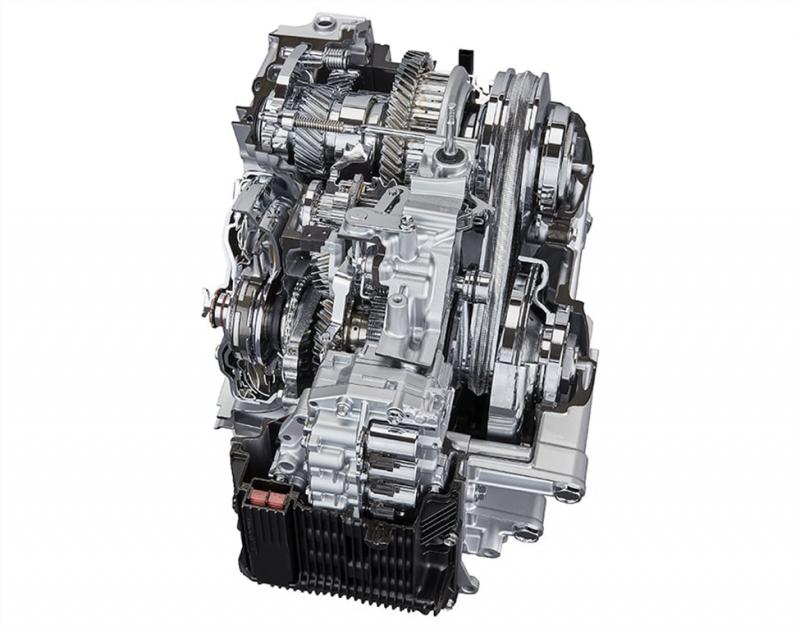Toyota CVT Transmission Issues & Preventative Maintenance Tips

Toyota is known for its reliability. Although this is generally true, there have been recalls in the past and even in recent times. The 2019 Toyota Corolla Hatchback was the most affected by the CVT's torque converters breaking down.
It should be noted that, since 2019, CVT reliability has improved dramatically.
Toyota Models with the CVT
The Toyota CVT transmission is more efficient in manipulating engine speeds, which results in exceptional fuel economy ratings. The most fuel-efficient Toyota Corolla LE Eco trim is the best example. It will get an amazing 30 mpg in city driving and 42 mpg on the highway.
Models that are equipped with a CVT Toyota transmissions are:
- Toyota RAV4
- Toyota Prius
- Toyota Corolla
- Toyota C-HR
- Toyota Camry
Common CVT Transmission Issues
The biggest problem with CVT transmissions is their inability to be repaired once they have broken. When the chain snaps it usually breaks into smaller pieces and shrapnel. They can cause damage to other parts of the transmission and render it useless.
Furthermore, the technician cannot repair the unit if this happens. Although CVT transmissions can be quite affordable nowadays, replacement costs for them will still run from $3,000 to $5,000.
These are the most common problems that are frequently mentioned in reviews:
Overheating - Avoid CVT transmissions if you are looking for performance driving. These transmissions are great for family cars, as they are mainly driven around the city and can't perform any difficult tasks.
Control module failure - The TCM usually needs to be replaced after 100,000 miles.
Engine Revs but Car Doesn’t Move - The engine revs but the car won't move. In this instance, the CVT has failed. After a thorough inspection and diagnostics, visit the dealer or repair shop to determine what can be done.
RPM’s not Constant - RPM arrow dances Your transmission may slip if the chain or belt becomes loose, it will soon break. It's better to stop driving this car as it's no longer reliable.
These are the most common problems with a Toyota transmission, https://reman-transmission.com/transmissions/toyota. They usually appear within 100,000 miles. You can replace your transmission if these issues start to bother you after 120,000 miles.
How to Avoid CVT Transmission Problems
Lay off the Pedal
Avoid aggressive driving that could cause damage to the Toyota CVT transmission components. Toyota's CVT transmission was designed for vehicle-friendly drivers, just like other CVT transmissions.
Regular Fluid Changes
Regular transmission oil changes are essential for CVT transmissions to ensure that the inside components remain clean. Any dirt or debris that gets inside the CVT transmission could cause damage to the components, particularly the chain and pulleys.
You need to use specialized transmission fluid. Although CVT lubricants may not be readily available, you should still find them at a certified service. There are reasons special lubricants are needed. CVTs work at higher temperatures, which can reduce oil's ability for lubrication.
It is easy to change the transmission fluid in most cars. Some automatic and CVT transmissions may require special equipment or procedures. If in doubt, consult your manual for details about the recommended procedure and fluid specifications.
Upgrade to a Better-quality Lubricant
There are reasons special lubricants are needed. CVTs work at higher temperatures, which can reduce oil's ability for lubrication. Although CVT lubricants may not be readily available, you can still find them at a certified service. It is easy to change the transmission fluid in most cars.
Some automatic and CVT transmissions may require special equipment or procedures. If in doubt, you can consult the car's manual for information about the recommended procedure and fluid specifications.
Install a Transmission Oil Cooler!
You can find many videos on the internet that will help you. Make sure you have some mechanical knowledge. If not, leave this job to professionals.
If your vehicle is equipped with a CVT, you might experience whining or judders when you accelerate. This could be a sign that your oil is low and you need to change it. This could also indicate a problem with the transmission. It is best to have a professional mechanic inspect it.
Tips for making a CVT transmission longer
- Your Toyota CVT Toyota should NEVER be used to tow any object.
- Know the maximum load of your CVT Toyota. Overloading the car will cause the transmission to fail faster.
- Warm-up your vehicle by turning on the engine and setting the selector to D. Then, release the brake and wait for 1 min.
- NEVER drive at the same speed for too long. Change your speed every 20 miles, or more often.
The Bottom Line
Although some Toyota transmissions may have had issues in the past, they are exceptionally reliable today. They can even last longer if maintained properly.
Regular oil changes are essential, as these transmissions require excellent lubrication. You should also inspect the transmission immediately if you hear or feel any noises. Your problems will get worse if you wait. This will make repairs more costly and may even require you to replace the entire unit.
More to Read:
Previous Posts:



